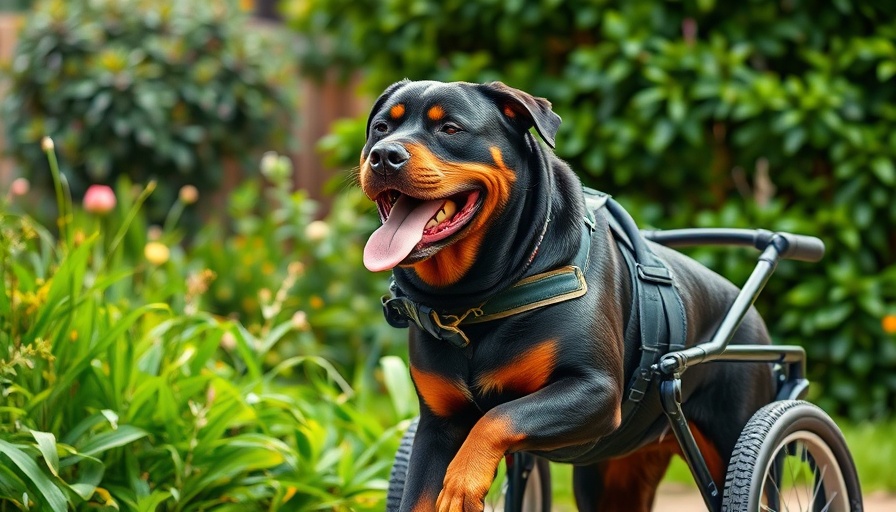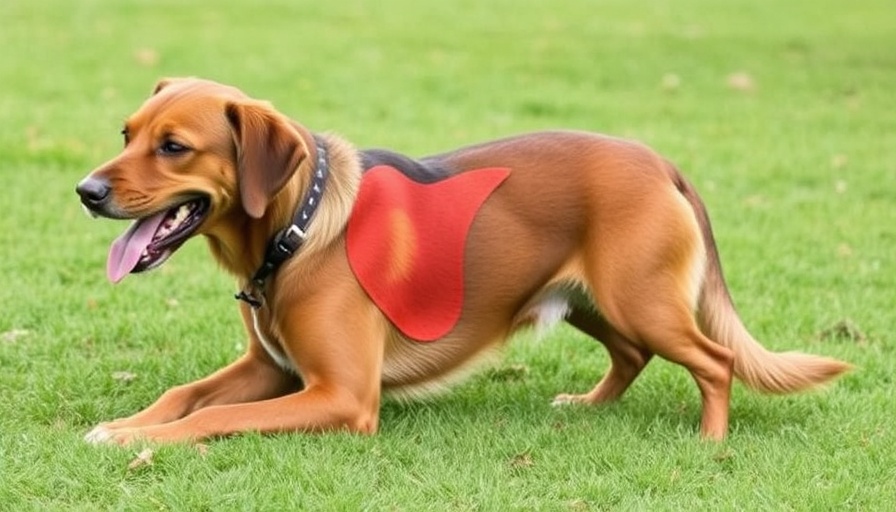
Understanding the Signs of Hind Leg Weakness in Dogs
As pet parents, discovering that our beloved dogs suddenly struggle to walk can be distressing. Affected canines may exhibit signs such as instability, uncoordinated movements, painful joints, and even signs of paralysis. These symptoms can indicate serious underlying issues that require immediate veterinary attention. The sooner your dog receives a professional assessment, the better their chances of recovery.
7 Common Causes of Sudden Hind Leg Weakness
Many factors can lead to sudden declines in your dog's mobility. Here are several critical causes that veterinarians regularly encounter:
- Intervertebral Disc Disease (IVDD): A common affliction in certain breeds such as Dachshunds, IVDD involves a herniated disc causing severe back pain and possible paralysis. Dogs may show sudden mobility loss following exercise, highlighting the need for swift veterinary intervention.
- Fibrocartilaginous Embolism (FCE): This "spinal stroke" restricts blood flow when a fragment of cartilage blocks an artery, leading to sudden leg dysfunction without pain. Larger breeds like Labradors and German Shepherds are often affected.
- Canine Arthritis: This degenerative joint disease primarily affects older dogs. The pain associated with arthritic joints can drastically limit mobility, leading to noticeable weakness in the back legs.
- Lumbosacral Stenosis: Characterized by nerve compression in the lower back, this painful condition may result in altered gait patterns, wobbling, and potential incontinence.
- Degenerative Myelopathy (DM): A progressive disease that primarily affects large breeds, DM leads to gradual hind leg weakness and paralysis, with many dogs experiencing a decline in their mobility.
- Patellar Luxation: This condition involves dislocation of the kneecap, which can result in intermittent limping or weakness, especially in small or toy breeds. Quick diagnosis can help address the issue and minimize discomfort.
- The Importance of Veterinary Care: Whatever the cause, prompt veterinary evaluation is paramount. Many cases of hind leg weakness can be managed or treated effectively if they are caught early. As many familiar with the veterinary field know, early intervention can greatly improve outcomes.
Emotional Impacts on Pet Parents
Understanding your dog's condition can be an emotional rollercoaster. Many pet parents feel helpless upon seeing their animals in pain or struggling to perform daily activities. If your pet exhibits symptoms of hind leg weakness, it's not just a health concern; it's a shared experience that can affect their families. Cultivating a supportive community among fellow pet owners empowers individuals to seek help and share experiences openly.
Insights for Veterinary Professionals and Pet Care Specialists
For veterinarians and vet technicians, recognizing these common conditions is vital in offering appropriate treatment. Educating pet parents about symptoms to look for and the necessity of veterinary check-ups empowers owners to engage proactively with their pet's health. Additionally, pet nutritionists and trainers can contribute by advising clients on diets and exercises that support mobility and joint health.
Connecting with Your Local Community
As advocates for animal welfare, encouraging pet parents to seek local resources and organizations dedicated to animal care provides valuable support. Engaging with groups such as rescue organizations and pet accessory developers not only helps spread awareness but strengthens community bonds. Share success stories and uplifting experiences to inspire more people to reach out.
Practical Tips for Managing Hind Leg Weakness at Home
For those managing a dog exhibiting hind leg weakness, creating a comfortable environment can help ease their journey. Consider investing in mobility aids like walking harnesses or wheelchairs, which can assist your pet in getting around and improving their quality of life. Regular short walks and adjusted meal plans can support mobility, while proper veterinary follow-ups will keep your furry friend on a path to recovery.
Final Thoughts on Hind Leg Weakness
If you observe symptoms of hind leg weakness in your dog, don't hesitate to consult a veterinarian. Understanding and addressing the underlying causes quickly can vastly improve your dog's quality of life and mobility. Reach out to your local pet care specialists and community advocates who can help you navigate these trying times. Ultimately, ensuring your dog’s health and happiness requires collaboration and engagement with your pet care network.
Ultimately, being informed and proactive allows pet parents to best support their furry companions through any struggles they face. Remember, the love of a pet transcends challenges, and together we can navigate comfort in the face of adversity.
 Add Row
Add Row  Add
Add 




Write A Comment